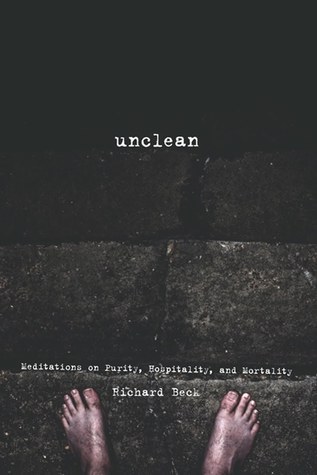More on this book
Community
Kindle Notes & Highlights
by
Richard Beck
Read between
December 21, 2015 - May 18, 2016
One way to frame this reading of “I desire mercy, not sacrifice” is to suggest that Jesus is forming an identity relationship between the Greatest Commandments, loving God and loving one’s neighbor. That is, rather than seeing these commands as separate injunctions that might, at times, compete with each other, the commands are fused, forming an identity. Loving God becomes loving my neighbor, with no remainder.
So there seem to be some excellent social and moral reasons for conflating the Greatest Commandments. But there are some concerns here as well. Specifically, when the Greatest Commandments form an identity relationship, the vertical, transcendent pursuit of holiness and purity is collapsed into the horizontal, immanent affairs of human relationships. Something is both gained and lost in this collapse. The gain, as we have just noted, is obvious. The pleasing of God can never become dislocated from the treatment of the other. Sacrifice has been folded into mercy. Purity is identified with
...more
By contrast, conservatives will contend that there are times when the sacred—agreement with the vertical dimension—should be privileged over the horizontal/human call for justice or equity. Liberals have largely rejected the vertical dimension, folding it into the immanent concerns of justice and equity. For liberals, the metaphysical (“the sacred”) isn’t a category worthy of consideration if real world harm and injustice are at stake. In the end, for the liberal, only justice and equity count as legitimate moral warrants. And as we have discussed, this disagreement about the legitimacy of the
...more
This, then, is one path the church could take. Finding disgust psychology too toxic and unmanageable, the church might reframe or eliminate purity categories from its life and practice. This is accomplished by forming an identity relationship between the Greatest Commandments, effectively collapsing the vertical pursuit of holiness into the immanent pursuit of mercy, equity, and justice.
A second outcome of the clergy/laity fusion was an increased moral burden upon the laity.
Taylor suggests that the moral intensification on the laity (along with disenchantment) made morality the telos, the goal of the Christian faith. What we owe God is goodness. As a result of disenchanted reform, Christianity became less spiritual but more moral. Further, while this moral reform was going on there was an increased valuing of mechanistic, instrumental reason (e.g., Newtonian physics).
In short, if goodness (or its more public face “civility”) is the goal, and if reason alone can be used to create well-functioning moral communities, then God and the sacred becomes less and less important. Reason and nature become guides to the good life, politically understood. God grows more distant, mainly thanked for creating reason and a morally coherent universe. The moral core of this civic and political existence would be for citizens to practice a “universal beneficence” that would foster peace and a well-functioning society.
One outcome of this collapse, the movement from enchantment to disenchantment, was the humanistic focus on civic and political life. The affairs of the town, and not the church, were the most important and in need of reform. With the loss of the sacred, the pursuit of purity and holiness was replaced with political concern and civic action. The secular age thus finds its life in what Taylor calls “the immanent frame,” the plane of solely human affairs after the collapse of the sacred.
My only point is that a “liberal” movement—collapsing the sacred into the immanent —does go a fair way in eliminating the noxious effects of disgust psychology upon the life and mission of the church. The cost, however, is the loss of the transcendent, which calls the existence of the church as a church into question.
Purity psychology is activated in the Lord’s Supper as the meal echoes the Day of Atonement, the ritual cleansing sacrifice of the Hebrews. As Christians participate in the Lord’s Supper they remember that they are “washed in the blood of the Lamb” and made “white as snow.” At the very same time, the Lord’s Supper is a ritual enactment of Jesus’ ministry of table fellowship. The Lord’s Supper is a corporate ritual in which members practice welcome and hospitality.
Regardless, I think it clear that the Eucharist can function as a disgust regulating ritual in the life of the church. The Lord’s Supper holds each facet of disgust in tension, preventing the pull of the purity collapse. Consequently, the Lord’s Supper allows the faith community to use purity metaphors while keeping those metaphors yoked with both hospitality and the body.
Of course, recognizing the regulative function of the Eucharist doesn’t imply that the ritual actually performs in this manner within a given faith community. But if this book has any recommendation it would be for churches to attend to and cultivate the tensions inherent in the celebration of the Eucharist. For it is in this ritual that holiness mixes with hospitality and an honest confrontation with our biological need and vulnerability.


